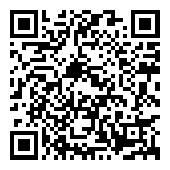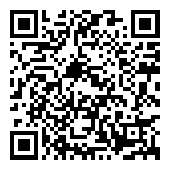HTML基本的头部标签
<!doctype html>
<html>
<head>
<meta charset="utf-8">
<meta http-equiv="x-ua-compatible" content="ie=edge">
<!--移动端的页面这个可以忽略,具体可以查看本文Internet Explorer浏览器部分-->
<meta name="viewport" content="width=device-width, initial-scale=1">
<!--具体可以查看本文 为移动设备添加 viewport 部分-->
<!-- 以上 3 个 meta 标签 *必须* 放在 head 的最前面;其他任何的 head 内容必须在这些标签的 *后面* -->
<title>页面标题</title>
...
</head>
在桌面开发的时候可以让IE浏览器以最新的模式渲染页面
<meta http-equiv="x-ua-compatible" content="ie=edge">
如果你的页面确定只在桌面浏览器中运行,那么
<meta name="viewport" content="width=device-width, initial-scale=1">
也可以省略
DOCTYPE
使用 HTML5 doctype,不区分大小写
<!DOCTYPE html> <!-- 使用 HTML5 doctype,不区分大小写 -->
charset
声明文档使用的字符编码
<meta charset="utf-8">
html5 之前网页中会这样写:
<meta http-equiv="Content-Type" content="text/html; charset=utf-8">
lang属性
简体中文
<html lang="zh-cmn-Hans">
繁体中文
<html lang="zh-cmn-Hant">
很少情况才需要加地区代码,通常是为了强调不同地区汉语使用差异,例如:
<p lang="zh-cmn-Hans">
<strong lang="zh-cmn-Hans-CN">菠萝</strong>和<strong lang="zh-cmn-Hant-TW">鳳梨</strong>其实是同一种水果。只是大陆和台湾称谓不同,且新加坡、马来西亚一带的称谓也是不同的,称之为<strong lang="zh-cmn-Hans-SG">黄梨</strong>。
</p>
Meta 标签
meta标签是HTML中head头部的一个辅助性标签,
虽然这部分信息用户不可见,但是其作用非常强大,特别是当今的前端开发工作中,设置合适的meta标签可以大大提升网站页面的可用性。
桌面端开发中,meta标签通常用来为搜索引擎优化(SEO)及 robots定义页面主题,或者是定义用户浏览器上的cookie;它可以用于鉴别作者,设定页面格式,标注内容提要和关键字;还可以设置页面使其可以根据你定义的时间间隔刷新自己,以及设置RASC内容等级,等等。
移动端开发中,meta标签除了桌面端中的功能设置外,还包括,比如viewport设置,添加到主屏幕图标,标签页颜色等等实用设置
推荐使用的meta标签
<!-- 设置文档的字符编码 -->
<meta charset="utf-8">
<meta http-equiv="x-ua-compatible" content="ie=edge">
<meta name="viewport" content="width=device-width, initial-scale=1, shrink-to-fit=no">
<!-- 以上 3 个 meta 标签 *必须* 放在 head 的最前面;其他任何的 head 内容必须在这些标签的 *后面* -->
<!-- 允许控制资源的过度加载 -->
<meta http-equiv="Content-Security-Policy" content="default-src 'self'">
<!-- 尽早地放置在文档中 -->
<!-- 仅应用于该标签下的内容 -->
<!-- Web 应用的名称(仅当网站被用作为一个应用时才使用)-->
<meta name="application-name" content="应用名称">
<!-- 针对页面的简短描述(限制 150 字符)-->
<!-- 在*某些*情况下,该描述是被用作搜索结果展示片段的一部分 -->
<meta name="description" content="一个页面描述">
<!-- 控制搜索引擎的抓取和索引行为 -->
<meta name="robots" content="index,follow,noodp"><!-- 所有的搜索引擎 -->
<meta name="googlebot" content="index,follow"><!-- 仅对 Google 有效 -->
<!-- 告诉 Google 不显示网站链接的搜索框 -->
<meta name="google" content="nositelinkssearchbox">
<!-- 告诉 Google 不提供此页面的翻译 -->
<meta name="google" content="notranslate">
<!-- 验证 Google 搜索控制台的所有权 -->
<meta name="google-site-verification" content="verification_token">
<!-- 用来命名软件或用于构建网页(如 - WordPress、Dreamweaver)-->
<meta name="generator" content="program">
<!-- 关于你的网站主题的简短描述 -->
<meta name="subject" content="你的网站主题">
<!-- 非常简短(少于 10 个字)的描述。主要用于学术论文。-->
<meta name="abstract" content="">
<!-- 完整的域名或网址 -->
<meta name="url" content="https://example.com/">
<meta name="directory" content="submission">
<!-- 基于网站内容给出一般的年龄分级 -->
<meta name="rating" content="General">
<!-- 允许控制 referrer 信息如何传递 -->
<meta name="referrer" content="never">
<!-- 禁用自动检测和格式化可能的电话号码 -->
<meta name="format-detection" content="telephone=no">
<!-- 通过设置为 “off” 完全退出 DNS 预取 -->
<meta http-equiv="x-dns-prefetch-control" content="off">
<!-- 在客户端存储 cookie,web 浏览器的客户端识别 -->
<meta http-equiv="set-cookie" content="name=value; expires=date; path=url">
<!-- 指定要显示在一个特定框架中的页面 -->
<meta http-equiv="Window-Target" content="_value">
<!-- 地理标签 -->
<meta name="ICBM" content="latitude, longitude">
<meta name="geo.position" content="latitude;longitude">
<!-- 国家代码 (ISO 3166-1): 强制性, 州代码 (ISO 3166-2): 可选; 如 content="US" / content="US-NY" -->
<meta name="geo.region" content="country[-state]">
<!-- 如 content="New York City" -->
<meta name="geo.placename" content="city/town">
不推荐的 meta 属性
下面是不推荐使用的 meta 属性,因为它们采用率低,或已弃用:
<!-- 用于声明文档语言,但支持得不是很好。最好使用 <html lang=""> -->
<meta name="language" content="en">
<!-- Google 无视 & Bing 认为垃圾的指示器 -->
<meta name="keywords" content="你,关键字,在这里,不使用空格,而用逗号进行分隔">
<!-- 目前没有在任何搜索引擎中使用过的声明 -->
<meta name="revised" content="Sunday, July 18th, 2010, 5:15 pm">
<!-- 为垃圾邮件机器人收获 email 地址提供了一种简单的方式 -->
<meta name="reply-to" content="email@example.com">
<!-- 最好使用 <link rel="author"> 或 humans.txt 文件 -->
<meta name="author" content="name, email@example.com">
<meta name="designer" content="">
<meta name="owner" content="">
<!-- 告诉搜索机器人一段时间后重新访问该网页。这不支持,因为大多数搜索引擎使用随机时间间隔来重新抓取网页 -->
<meta name="revisit-after" content="7 days">
<!-- 在一段时间后将用户重定向到新的 URL -->
<!-- W3C 建议不要使用该标签。Google 建议使用服务器端的 301 重定向。-->
<meta http-equiv="refresh" content="300; url=https://example.com/">
<!-- 描述网站的主题 -->
<meta name="topic" content="">
<!-- 公司概要或网站目的 -->
<meta name="summary" content="">
<!-- 一个已废弃的标签,和关键词 meta 标签的作用相同 -->
<meta name="classification" content="business">
<!-- 是否是相同的 URL,年代久远且不支持 -->
<meta name="identifier-URL" content="https://example.com/">
<!-- 和关键词标签类似的功能 -->
<meta name="category" content="">
<!-- 确保你的网站在所有国家和语言中都能显示 -->
<meta name="coverage" content="Worldwide">
<!-- 和 coverage 标签相同 -->
<meta name="distribution" content="Global">
<!-- 控制在互联网上哪些用户可以访问 -->
<meta http-equiv="Pics-label" content="value">
<!-- 缓存控制 -->
<!-- 最好在服务器端配置缓存控制 -->
<meta http-equiv="Expires" content="0">
<meta http-equiv="Pragma" content="no-cache">
<meta http-equiv="Cache-Control" content="no-cache">
link 标签
说到 link 标签,估计大家的第一反应和我一样,就是引入外部CSS样式文件的,不错,这是 link 标签最最常用的功能。不过它还有很多别的用处,比如这是浏览器 favicon 图标,touch图标等等。
<!-- 有助于防止出现内容重复的问题 -->
<link rel="canonical" href="https://example.com/2010/06/9-things-to-do-before-entering-social-media.html">
<!-- 之前用于包含 icon 链接,但已被废弃并不再使用 -->
<link rel="shortlink" href="https://example.com/?p=42">
<!-- 链接到当前文档的一个 AMP HTML 版本 -->
<link rel="amphtml" href="https://example.com/path/to/amp-version.html">
<!-- 表明一个 CSS 样式表 -->
<link rel="stylesheet" href="https://example.com/styles.css">
<!-- 链接到一个指定 Web 应用程序“安装”证书的 JSON 文件 -->
<link rel="manifest" href="manifest.json">
<!-- 链接到文档的作者 -->
<link rel="author" href="humans.txt">
<!-- 指向一个适用于链接内容的版权申明 -->
<link rel="copyright" href="copyright.html">
<!-- 给出可能的你的另一种语言的文档位置参考 -->
<link rel="alternate" href="https://es.example.com/" hreflang="es">
<!-- 提供了关于作者或其他人的信息 -->
<link rel="me" href="https://google.com/profiles/thenextweb" type="text/html">
<link rel="me" href="mailto:name@example.com">
<link rel="me" href="sms:+15035550125">
<!-- 链接到一个文档,包含当前文档的一个归档链接 -->
<link rel="archives" href="https://example.com/2003/05/" title="May 2003">
<!-- 链接到层次结构中的顶级资源 -->
<link rel="index" href="https://example.com/" title="DeWitt Clinton">
<!-- 给出该文档的起点 -->
<link rel="start" href="https://example.com/photos/pattern_recognition_1_about/" title="Pattern Recognition 1">
<!-- 引导当前文档的前述资源序列 -->
<link rel="prev" href="https://example.com/opensearch/opensearch-and-openid-a-sure-way-to-get-my-attention/" title="OpenSearch and OpenID? A sure way to get my attention.">
<!-- 给出一个自我参考 - 当文档有多个可能的参考时非常有用 -->
<link rel="self" type="application/atom+xml" href="https://example.com/atomFeed.php?page=3">
<!-- 分别是在一系列文件中的第一个、下一个、上一个和最后一个 -->
<link rel="first" href="https://example.com/atomFeed.php">
<link rel="next" href="https://example.com/atomFeed.php?page=4">
<link rel="previous" href="https://example.com/atomFeed.php?page=2">
<link rel="last" href="https://example.com/atomFeed.php?page=147">
<!-- 当使用第三方服务来维护 blog 时使用 -->
<link rel="EditURI" href="https://example.com/xmlrpc.php?rsd" type="application/rsd+xml" title="RSD">
<!-- 当另一个 WordPress 博客链接到你的 WordPress 博客或文章时形成一个自动化的评论 -->
<link rel="pingback" href="https://example.com/xmlrpc.php">
<!-- 当你在自己的页面上链接到一个 url 时通知它 -->
<link rel="webmention" href="https://example.com/webmention">
<!-- 加载一个外部的 HTML 文件到当前 HTML 文件中 -->
<link rel="import" href="component.html">
<!-- 打开搜索 -->
<link rel="search" href="/open-search.xml" type="application/opensearchdescription+xml" title="Search Title">
<!-- Feeds -->
<link rel="alternate" href="https://feeds.feedburner.com/example" type="application/rss+xml" title="RSS">
<link rel="alternate" href="https://example.com/feed.atom" type="application/atom+xml" title="Atom 0.3">
<!-- 预取,预载,预浏览 -->
<link rel="dns-prefetch" href="//example.com/">
<link rel="preconnect" href="https://www.example.com/">
<link rel="prefetch" href="https://www.example.com/">
<link rel="prerender" href="https://example.com/">
<link rel="preload" href="image.png" as="image">
不推荐的link标签
<link rel="shortcut icon" href="path/to/favicon.ico">
<!-- 没有用的, 专有的和错误的, 详见 https://groups.google.com/a/chromium.org/forum/#!msg/blink-dev/Y_2eFRh9BOs/gULYapoRBwAJ -->
<link rel="subresource" href="styles.css">
favicon 图标
E 11, Chrome, Firefox, Safari, Opera支持形式设置:
<link rel="icon" href="path/to/favicon-16.png" sizes="16x16" type="image/png">
<link rel="icon" href="path/to/favicon-32.png" sizes="32x32" type="image/png">
<link rel="icon" href="path/to/favicon-48.png" sizes="48x48" type="image/png">
<link rel="icon" href="path/to/favicon-62.png" sizes="62x62" type="image/png">
<link rel="icon" href="path/to/favicon-192.png" sizes="192x192" type="image/png">
注意:对于IE 10及以下版本不支持形式设置,只通过将命名为favicon.ico的文件放置在网站根目录中实现。
浏览器及平台详细说明
QQ 浏览器(X5 内核)
QQ 浏览器(X5 内核)同样适用于微信,QQ等第三方应用页面开发
<!-- 设置锁定横屏、竖屏显示模式,portrait(横屏),landscape(竖屏)-->
<meta name="x5-orientation" content="portrait|landscape">
<!-- 设置全屏显示页面 -->
<meta name="x5-fullscreen" content="true">
<!-- 开启页面以应用模式显示(全屏显示等) -->
<meta name="x5-page-mode" content="app">
360浏览器
设置 360 浏览器渲染模式:webkit 为极速内核,ie-comp 为 IE 兼容内核,ie-stand 为 IE 标准内核
<meta name="renderer" content="webkit|ie-comp|ie-stand">
360 浏览器就会在读取到这个标签后,立即切换对应的极速核。 另外为了保险起见再加入
<meta http-equiv="X-UA-Compatible" content="IE=Edge,chrome=1">
UC 浏览器
设置屏幕方向
portrait 为横屏,landscape 为竖屏。
<meta name="screen-orientation" content="portrait|landscape">
设置全屏
<meta name="full-screen" content="yes">
设置适应屏幕排版(缩放是否显示滚动条)
UC 浏览器在标准排版效果实现的基础上,提供适应屏幕的排版方式,当设置为 uc-fitscreen=yes,页面进行缩放操作时,仅放大图片和文字等元素,但不放大屏幕宽度,保持不出现水平(横向)滚动条。
<meta name="viewport" content="uc-fitscreen=no|yes">
排版模式
UC 浏览器提供两种排版模式,分别是适屏模式(fitscreen)及标准模式(standard),其中适屏模式简化了一些页面的处理,使得页面内容更适合进行页面阅读、节省流量及响应更快,而标准模式则能按照标准规范对页面进行排版及渲染。
<meta name="layoutmode" content="fitscreen|standard">
夜间模式
注意:页面内的 frame/iframe 中的夜间模式的 meta 不生效
<meta name="nightmode" content="enable|disable">
Apple iOS原生浏览器
忽略数字自动识别为电话号码
<meta name="format-detection" content="telephone=no">
启用 WebApp 全屏模式
<meta name="apple-mobile-web-app-capable" content="yes">
添加到主屏后设置状态栏的背景颜色
<meta name="apple-mobile-web-app-status-bar-style" content="black">
只有在 “apple-mobile-web-app-capable” content=”yes” 时生效。
- 如果设置为 default 或 black ,网页内容从状态栏底部开始。
- 如果设置为 black-translucent ,网页内容充满整个屏幕,顶部会被状态栏遮挡。
添加到主屏后的标题(iOS 6 新增)
<meta name="apple-mobile-web-app-title" content="App Title">
iOS 图标
<link rel="apple-touch-icon" href="path/to/apple-touch-icon.png">
iOS 应用深度链接
<meta name="apple-itunes-app" content="app-id=APP-ID, app-argument=http/url-sample.com">
<link rel="alternate" href="ios-app://APP-ID/http/url-sample.com">
Google Android原生浏览器
添加到主屏
<!-- 添加到主屏 -->
<meta name="mobile-web-app-capable" content="yes">
安卓应用深度链接(网页上唤起应用)
<!-- Android app deep linking -->
<meta name="google-play-app" content="app-id=package-name">
<link rel="alternate" href="android-app://package-name/http/url-sample.com">
Google Chrome Mobile (只针对 Android)
从 Chrome 31 开始,你可以设置你的 Web 应用为“app mode”,如 Safari。
<!-- 链接到一个 manifest 并定义 manifest 的元数据。-->
<!-- manifest.json 中的例子也可以通过以下链接找到。-->
<link rel="manifest" href="manifest.json">
<!-- 定义你的网页为 Web 应用 -->
<meta name="mobile-web-app-capable" content="yes">
<!-- 第一个是官方推荐格式。-->
<link rel="icon" sizes="192x192" href="nice-highres.png">
<link rel="icon" sizes="128x128" href="niceicon.png">
<!-- 所有带 apple 前缀的格式已废弃,所以不要使用它们。-->
<link rel="apple-touch-icon" sizes="128x128" href="niceicon.png">
<link rel="apple-touch-icon-precomposed" sizes="128x128" href="niceicon.png">
Internet Explorer浏览器
模式设置
//IE8以下以IE7标准模式呈现网页,而IE9则以IE9的标准模式呈现网页:
<meta http-equiv="X-UA-Compatible" content="IE=EmulateIE7; IE=EmulateIE9">
//如果安装了GCF,则使用GCF来渲染页面("chrome=1"),
//如果没有安装GCF,则使用最高版本的IE内核进行渲染("IE=edge")
<meta http-equiv="x-ua-compatible" content="ie=edge">
win8,win10下的一些设置
<meta http-equiv="cleartype" content="on">
<meta name="skype_toolbar" content="skype_toolbar_parser_compatible">
<!--
Disable link highlighting on IE 10 on Windows Phone
具体说明查看:https://blogs.windows.com/buildingapps/2012/11/15/adapting-your-webkit-optimized-site-for-internet-explorer-10/-->
<meta name="msapplication-tap-highlight" content="no">
<!--
Pinned sites
具体说明查看:https://msdn.microsoft.com/en-us/library/dn255024(v=vs.85).aspx-->
<meta name="application-name" content="Contoso Pinned Site Caption">
<meta name="msapplication-tooltip" content="Example Tooltip Text">
<meta name="msapplication-starturl" content="/">
<meta name="msapplication-config" content="http://example.com/browserconfig.xml">
<meta name="msapplication-allowDomainApiCalls" content="true">
<meta name="msapplication-allowDomainMetaTags" content="true">
<meta name="msapplication-badge" content="frequency=30; polling-uri=http://example.com/id45453245/polling.xml">
<meta name="msapplication-navbutton-color" content="#FF3300">
<meta name="msapplication-notification" content="frequency=60;polling-uri=http://example.com/livetile">
<meta name="msapplication-square150x150logo" content="path/to/logo.png">
<meta name="msapplication-square310x310logo" content="path/to/largelogo.png">
<meta name="msapplication-square70x70logo" content="path/to/tinylogo.png">
<meta name="msapplication-wide310x150logo" content="path/to/widelogo.png">
<meta name="msapplication-task" content="name=Check Order Status;action-uri=./orderStatus.aspx?src=IE9;icon-uri=./favicon.ico">
<meta name="msapplication-task-separator" content="1">
//Windows 8 磁贴颜色
<meta name="msapplication-TileColor" content="#FF3300">
//Windows 8 磁贴图标
<meta name="msapplication-TileImage" content="path/to/tileimage.jpg">
<meta name="msapplication-window" content="width=1024;height=768">
APP 链接
<!-- iOS -->
<meta property="al:ios:url" content="applinks://docs">
<meta property="al:ios:app_store_id" content="12345">
<meta property="al:ios:app_name" content="App Links">
<!-- Android -->
<meta property="al:android:url" content="applinks://docs">
<meta property="al:android:app_name" content="App Links">
<meta property="al:android:package" content="org.applinks">
<!-- Web Fallback -->
<meta property="al:web:url" content="http://applinks.org/documentation">
<!-- More info: http://applinks.org/documentation/ -->









